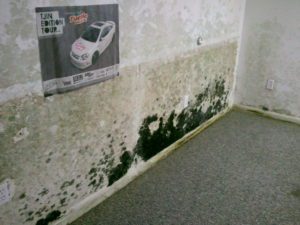
What are Molds?
Molds are a simple microscopic organism, present almost everywhere indoors and out. Mold needs a food source, a moisture source and at times a heat source to grow. Mold spores primarily cause health problems when they are in large numbers and people inhale many of them.
Should I be concerned about mold in my home?
YES!! If indoor mold contamination is extensive, it can cause very high and persistent airborne spore exposures. Mold can damage your furnishings, such as carpets, sofas, and cabinets. Unchecked mold can cause serious damage to the structural elements in your home over time.
What are the warning signs of mold?
Things to be on the lookout for in your home are; flooding, leaky roofs, plumbing leaks, damp basement and steam from showers. Warping of floors and discoloration of walls and ceilings can be indications of moisture problems as well.
What are the health effects of mold?
Molds produce health effects through inflammation, allergy or infection. Typical symptoms of mold exposure are respiratory problems such as wheezing, difficulty breathing, and shortness of breath. Other signs are Nasal and sinus problems, eye irritation, dry cough, or even skin rashes.
What does mold feed on?
– Wood
– Paper
– Drywall
– Insulation
– Natural Fibers
– Plants and Potting Soil
– Paint
– Starch in Wallpaper Paste
– Caulk
How can I prevent indoor mold problems?
1. Keep your home between 40-50% moisture (humidity level)
2. Check and clean bathroom exhaust fans. Over time the dust will can settle in the fan shaft and on the blades causing poor exhaust flow
3. Run de-humidifiers in damp ares, such as basements
4. Check around the the shower caulking. If the caulk has a caulk has a black color, this is mold. Bleach will clean the top portion of the caulk, but it will not kill the mold roots
5. Change furnace air filters and change or wash de-humidifier filters every 30 days
6. Have air ducts cleaned and checked. Air ducts are a good way to spread mold throughout the home
7. Have an air quality test done by a certified professional. This test is sent off to a lab and will let you know the indoor mold spore count and overall air quality of your home
How can I prevent further mold growth?
Stop the source of any leak. Open cabinet and closet doors and keep furniture away from walls to increase air circulation. And run dehumidifiers. DO NOT use fans if mold has started to grow, this will cause mold spores to spread throughout the home. If water has soaked inside of walls, it may be necessary to open the wall cavity. Air ducts also can become contaminated with mold and are a good way to spread mold spores.
You can also find more emergency tips on water damage, fire and smoke damage and harmful waste at Servpro.com
